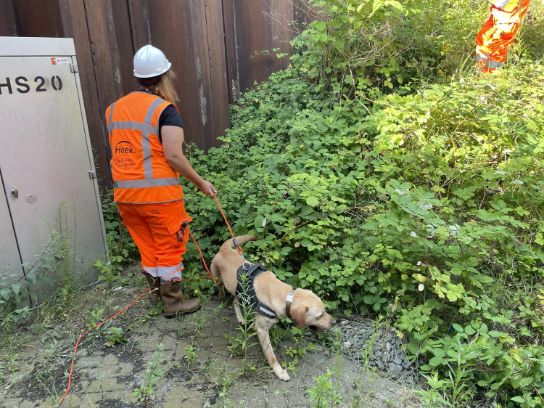Zuidasdok: Investigation of the quality of the soil and the presence of the Japanese knotweed problem

Zuidasdok: Investigation of the quality of the soil and the presence of the Japanese knotweed problem
For the Zuidasdok project, Witteveen+Bos conducted a soil quality inventory and a desk study into the presence of Japanese knotweed. The inventory showed that an additional environmental (soil) investigation was necessary. To gain insight into the actual nature and extent of the growing locations of the Japanese knotweed, a site survey was required.
Witteveen+Bos is working with Arcadis and AT Osborne (in the Ingenieursbureau Zuidasdok entity) on Zuidasdok, currently one of the largest infrastructural projects in the Netherlands. The project will improve the accessibility of Amsterdam and the northern part of the Randstad, both by road and by public transport. The project includes an expansion and redesign of the Amsterdam Zuid train and metro station and a widening and (partial) tunnelling of the A10 highway.
The BDS2022 (decommissioning of parts of the A4 and A10 highways and two railway tracks between 22 July and 3 August 2022) offered a unique opportunity to conduct conditioning studies at locations that are normally difficult to access. During this period, Witteveen+Bos assisted with the additional soil investigation and the survey for the aforementioned invasive exotic species.
Damage caused by Japanese knotweed
Japanese knotweed is a plant that can cause a lot of damage to infrastructure, such as sewage systems, building foundations, roads, etc. The plant also has a lot of vigour and can spread quickly. Small root parts can grow into a completely new plant. Poor mowing management, earth moving activities and sales through garden centres have allowed the plant to spread throughout the country, including into the Zuidasdok project area.
Nationwide, it is now forbidden to trade the plant or soil with plant parts. The latter is a major risk, especially for larger projects involving earth moving activities on a large scale. It is therefore important to gain insight into the nature and extent of growth locations prior to any earth moving activities. A site survey is essential to achieve this.
Detection dog
Witteveen+Bos worked with a specialised subcontractor to conduct the survey. This site survey consists of two parts. First, a visual inspection by an expert, who recorded and measured all visible above-ground growth locations.
The second part of the site survey consists of the detection of underground root parts of the plant by a detection dog. This dog is trained to recognise the smell of the roots of the plant and therefore only recognises the underground parts.
The second part of the site survey was used as a trial in consultation with Zuidasdok. The dog reacted at several locations which did not yet show any above-ground parts of the plant. To gain more insight into the reliability of this detection method, these locations will be monitored and investigated during the coming years.

Additional soil investigation
Witteveen+Bos also worked with a specialist environmental fieldwork agency to conduct the additional soil investigation. This investigation provided additional insight into the soil quality, allowing us to better estimate the nature and extent of previously found contamination. The presence of PFASs was also investigated, primarily in connection with historical extinguishing sites of car fires along the motorway.
For the work around Station Zuid, Witteveen+Bos prepared a framework remediation plan in consultation with the competent authority. This plan also includes the work to be performed during the BDS2022. The framework remediation plan allows the contractors’ consortium to continue their work without any delays if unexpected soil contamination is found. This was essential for the planning of the BDS2022 and remains relevant for future works.
In consultation with the competent authority, Witteveen+Bos has also made agreements on how to proceed if Japanese knotweed is (unexpectedly) found during the excavation work. This will tell the implementing parties what needs to be taken into account. Specific agreements have been made about the remediation method and the monitoring of the plant in complex situations.
More information?

